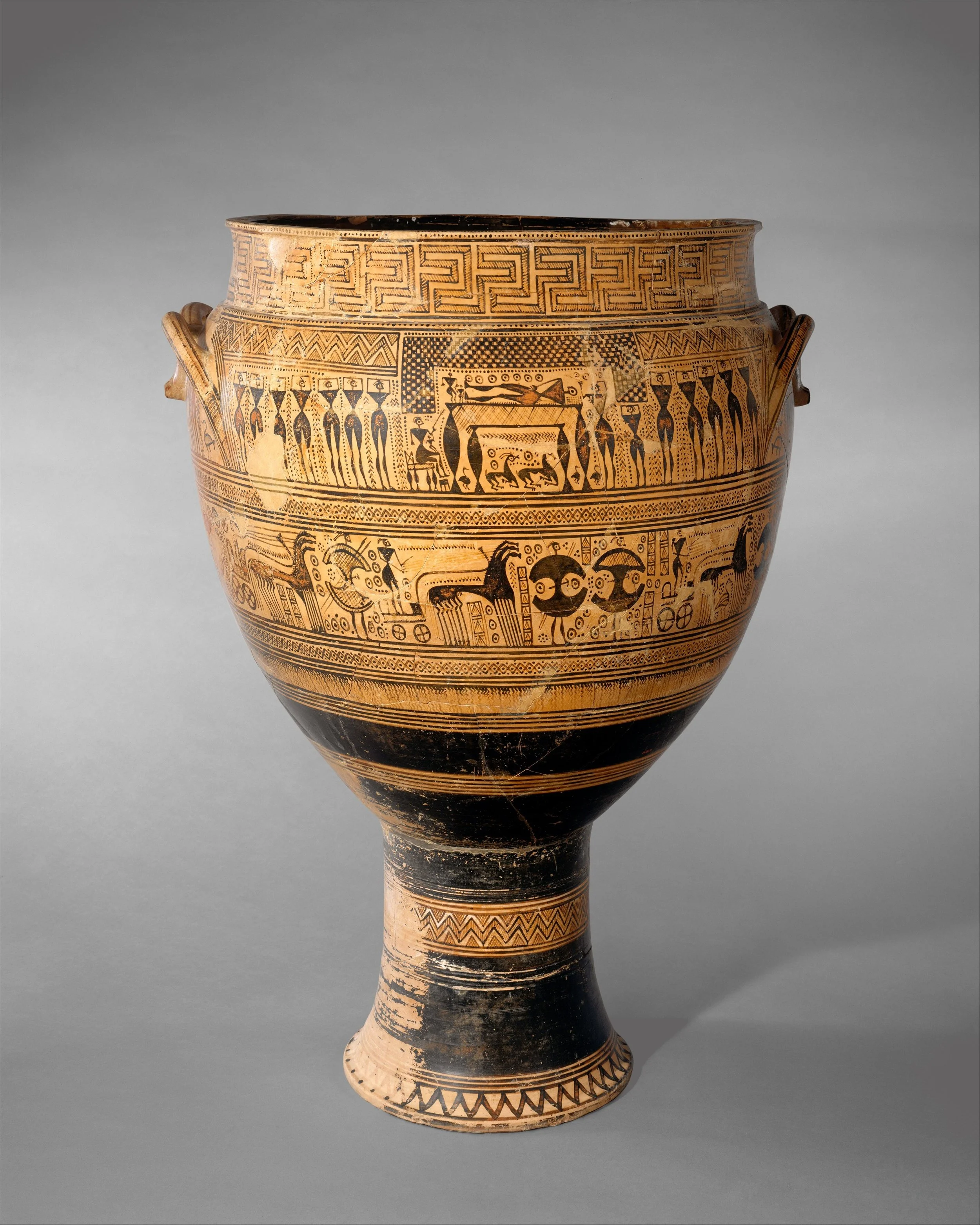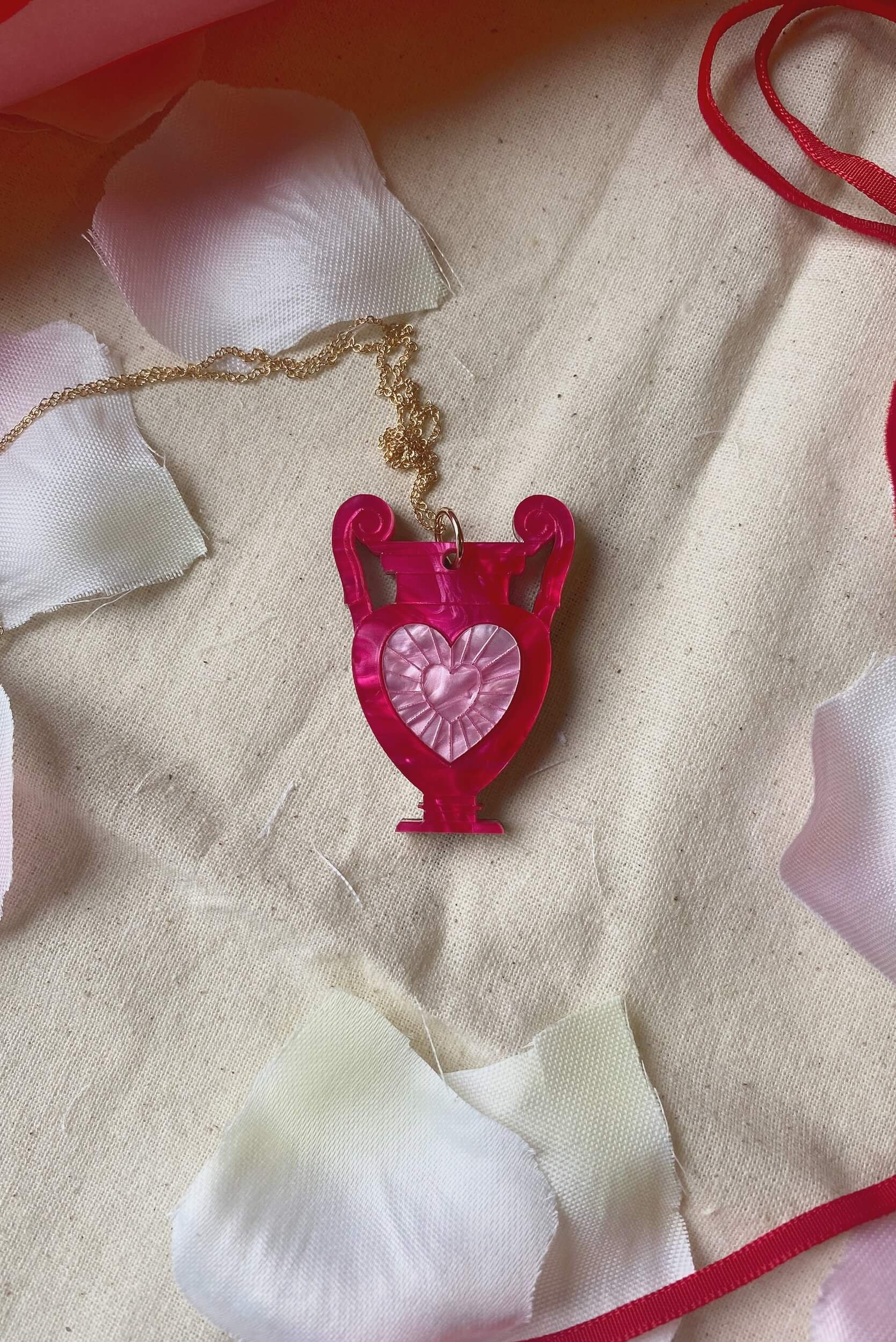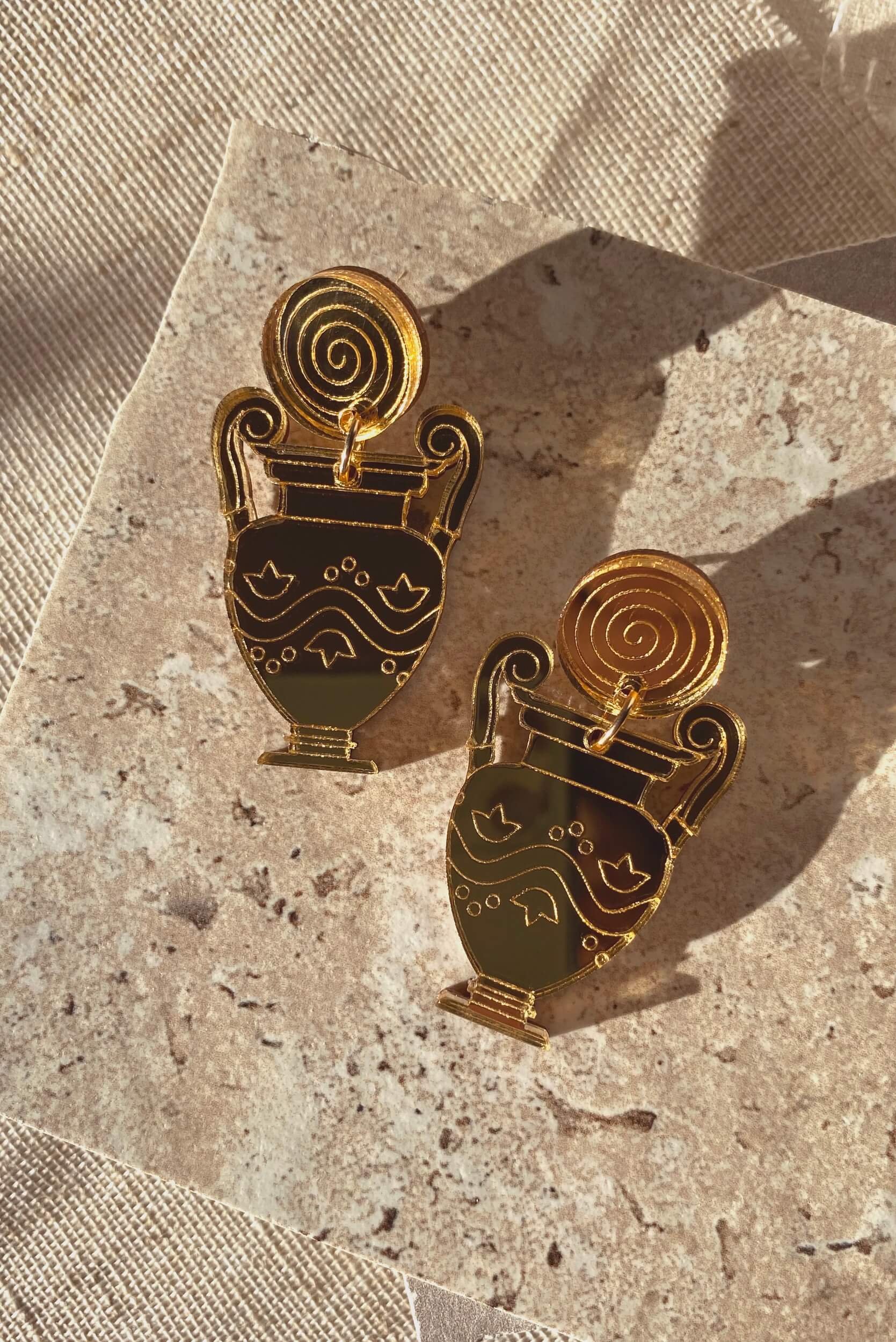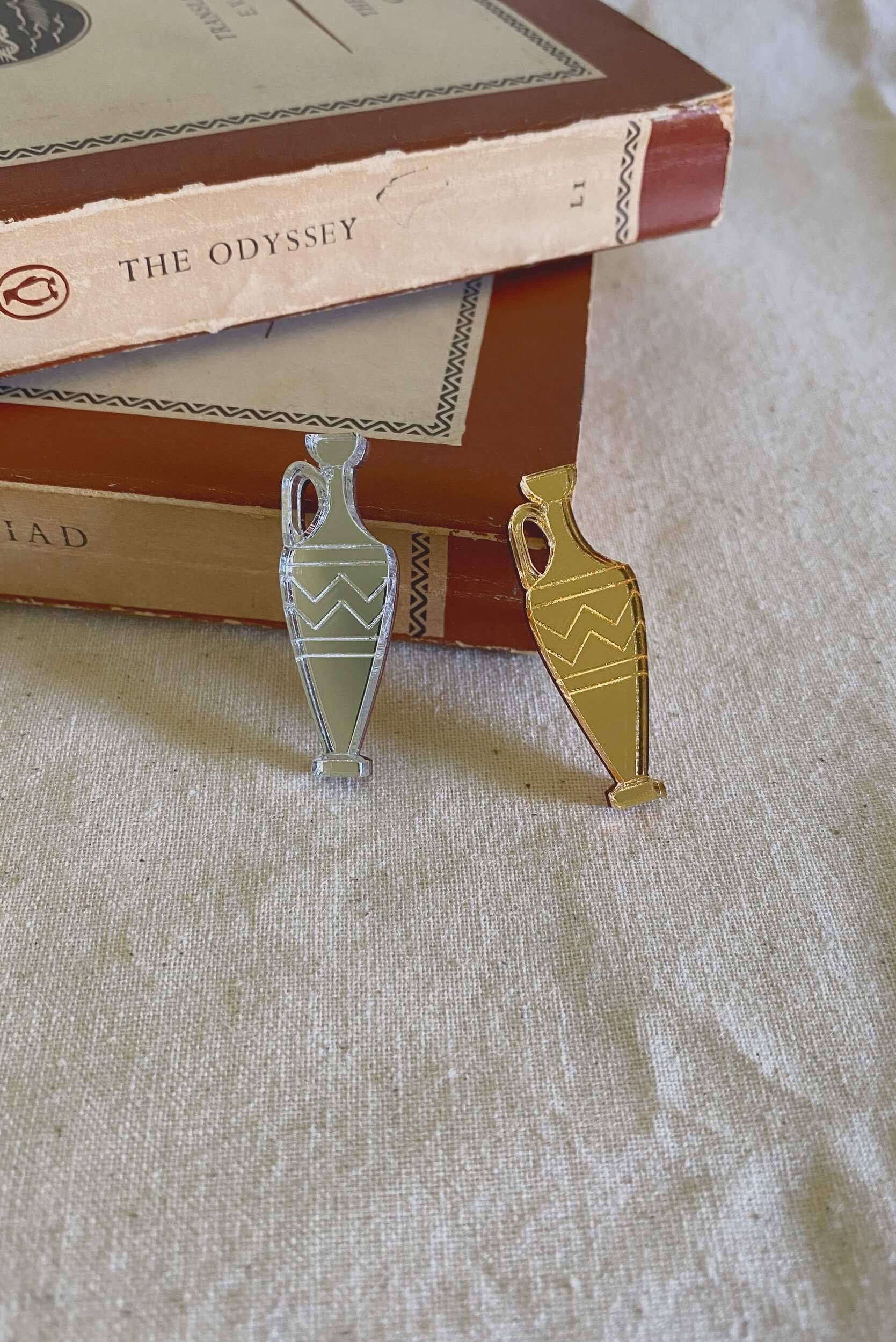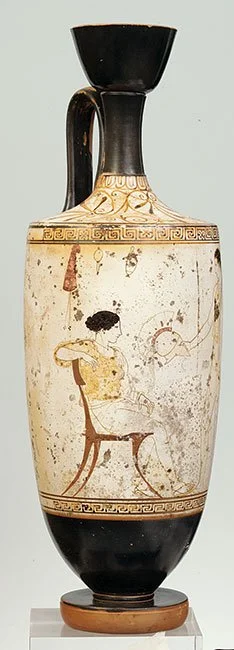Ancient Greek funerary vases
The ancient Greeks crafted beautiful pottery to leave as offerings on the graves of their loved ones, from the enormous monumental vases of the Geometric period (around 900-700 BC) to the highly intricate white-ground lekythoi of Classical Athens (480-323 BC). Here are some of my favourites:
1. Monumental krater
Monumental krater, ca. 750-735 BC, currently on display at the Metropolitan Museum of Art.
Enormous vases around five feet tall were used as grave markers during the Geometric period. They often depicted funerary scenes; this one, on the belly of the vase, shows the prothesis, the ‘laying out of the dead’ where mourners would come to pay their respects to the dead.
2. White ground lekythos
White ground lekythos (attributed to the Brygos Painter), ca. 490-470 BC, currently on display at the British Museum.
The detail in this vase painting is extraordinary: the folds of her dress, the different patterns of the different fabrics used, the colour, the sense of volume, her gorgeous hair! The writing next to her says ‘the girl is beautiful’ - damn right she is.
3. White ground lekythos
White ground lekythos (attributed to the Sabouroff Painter), ca. 450 BC, currently on display at the Metropolitan Museum of Art.
White ground lekythoi were enormously popular in Classical Athens, where they were used as grave offerings. As such, they often depicted funerary scenes: this one shows Hermes, wearing his winged sandals and holding his caduceus, in his role as psychopompos (conductor of souls into the afterlife). His left arm is stretched out to a young man, beckoning him onto Charon’s boat. Charon is depicted wearing a bright red tunic and a polka dot hat. Who knew the ferryman was so stylish?
4. White ground lekythos
White ground lekythos (attributed to the Achilles Painter), ca. 440-435 BC, currently at the National Archaeological Museum of Athens.
The white ground technique - painting on a white background as opposed to black or red/orange - allowed vase painters to use more colours for decoration. There’s a softness to this woman’s yellow dress, and her pose; a contrast to the man’s angular helmet and taut, outstretched arm. This scene of a warrior departing is another popular motif on funerary vases: a reminder of how many young men would go off to war and never return home alive.
5. Red figure loutrophoros
Loutrophoros, ca. 430 BC, currently on display at the British Museum.
The tall, slender, long handled loutrophoros was used as part of a bride’s pre-wedding ritual - and also placed on the graves of those who died before they were married. On this example, a group of tightly-crowded female mourners, wearing black, carry the deceased on his bier.
6. White ground lekythos
White ground lekythos (attributed to the Thanatos Painter), ca. 435-425 BC, currently on display at the British Museum.
There are so many things I love about this vase: the dude who thinks it’s a good idea to go hunting basically naked (taking tips from Odysseus?) to the excellent rendering of his hand (I could never) to the energy of the chase scene to the DOG WHAT A CUTE DOG OMG. Is it a lurcher? A small greyhound? I love it!!
7. Red figure oon
Oon (attributed to the Washing Painter), ca. 420-410 BC, currently on display at the Metropolitan Museum of Art.
Oa were tiny little vases shaped like eggs, sometimes with lids and sometimes with holes in them. There isn’t a consensus about what they were used for (I reckon salt and pepper shakers) but eggs, both real and manufactured, were often left as offerings at graves. This one depicts a young man and a woman on a chariot - interpreted as Paris and Helen, She-Who-Was-Born-From-An-Egg-(Apparently).
8. White ground lekythos
White ground lekythos (attributed to the Reed Painter), ca. 420-400 BC, currently on display at the British Museum.
The colour! The detail! It’s a crime that the British Museum call this drawing ‘careless’ in their description because I think it’s completely charming. I love that boy in his blue outfit and his enigmatic expression and I love the ribbons tied around the grave marker next to him and I love the wonky meander pattern painted above him.

